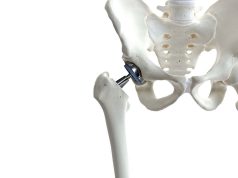Awareness of these factors may promote ovarian-conserving surgery, the authors say
TUESDAY, Dec. 29, 2020 (HealthDay News) — Certain patient, clinical, and provider factors are associated with a higher likelihood of oophorectomy in patients with ovarian torsion (OT), according to a study published online Dec. 16 in the Journal of Gynecologic Surgery.
Laura Daniela Michelis, M.D., from the Boston University School of Medicine, and colleagues used diagnosis codes to identify 54 women (<50 years of age) who presented to an urban safety-net hospital emergency department between Jan. 1, 2009, and July 31, 2014, with a diagnosis of OT and who had surgery within one week of presentation.
Of the 54 women with suspected OT undergoing surgery, the researchers report that 78 percent had OT diagnosed at surgery and an oophorectomy was not performed in any of the non-OT cases. Among those diagnosed with OT, 60 percent had an oophorectomy and 40 percent underwent ovarian cystectomy. Higher rates of oophorectomy were seen among patients with older age, higher parity, and larger size of the affected ovary on imaging. Further, oophorectomy was associated with having a laparotomy and surgeon subspecialty. In 9.3 percent of cases of oophorectomy, gynecologic oncologists were the primary surgeons, and they were more likely than generalists or other subspecialists to remove the affected ovary. Only 20 percent of the ovaries removed were actually necrotic.
“Understanding the clinical factors associated with a higher likelihood of oophorectomy in ovarian torsion cases may help to reduce unnecessary oophorectomies in the future and thus improve fertility and overall health of premenopausal women,” a coauthor said in a statement.
One author disclosed financial ties to the pharmaceutical industry.
Copyright © 2020 HealthDay. All rights reserved.








